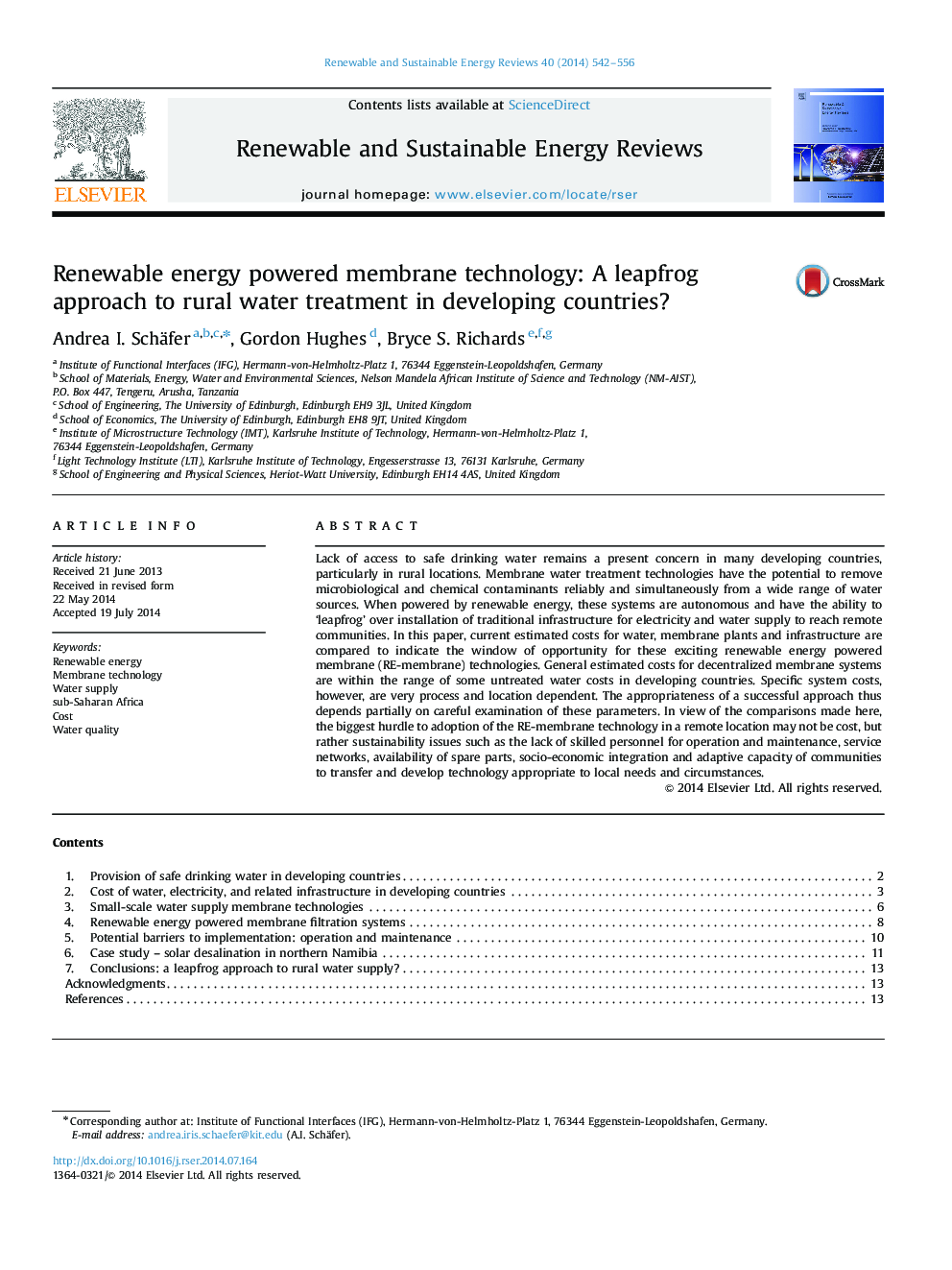| Article ID | Journal | Published Year | Pages | File Type |
|---|---|---|---|---|
| 8118805 | Renewable and Sustainable Energy Reviews | 2014 | 15 Pages |
Abstract
Lack of access to safe drinking water remains a present concern in many developing countries, particularly in rural locations. Membrane water treatment technologies have the potential to remove microbiological and chemical contaminants reliably and simultaneously from a wide range of water sources. When powered by renewable energy, these systems are autonomous and have the ability to 'leapfrog' over installation of traditional infrastructure for electricity and water supply to reach remote communities. In this paper, current estimated costs for water, membrane plants and infrastructure are compared to indicate the window of opportunity for these exciting renewable energy powered membrane (RE-membrane) technologies. General estimated costs for decentralized membrane systems are within the range of some untreated water costs in developing countries. Specific system costs, however, are very process and location dependent. The appropriateness of a successful approach thus depends partially on careful examination of these parameters. In view of the comparisons made here, the biggest hurdle to adoption of the RE-membrane technology in a remote location may not be cost, but rather sustainability issues such as the lack of skilled personnel for operation and maintenance, service networks, availability of spare parts, socio-economic integration and adaptive capacity of communities to transfer and develop technology appropriate to local needs and circumstances.
Related Topics
Physical Sciences and Engineering
Energy
Renewable Energy, Sustainability and the Environment
Authors
Andrea I. Schäfer, Gordon Hughes, Bryce S. Richards,
